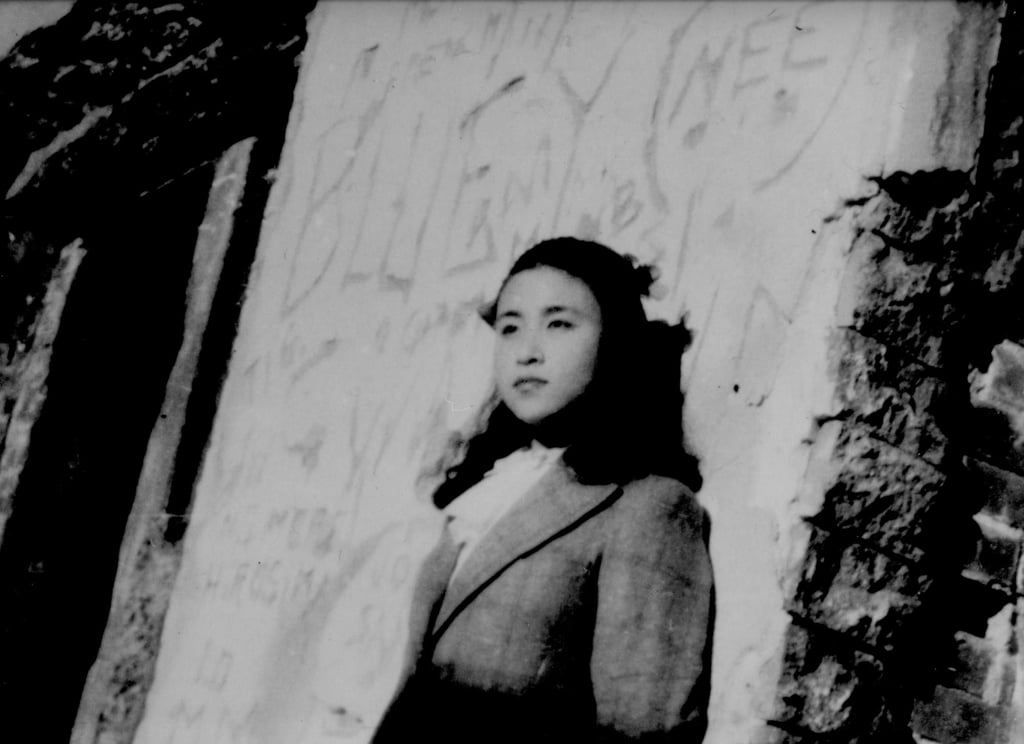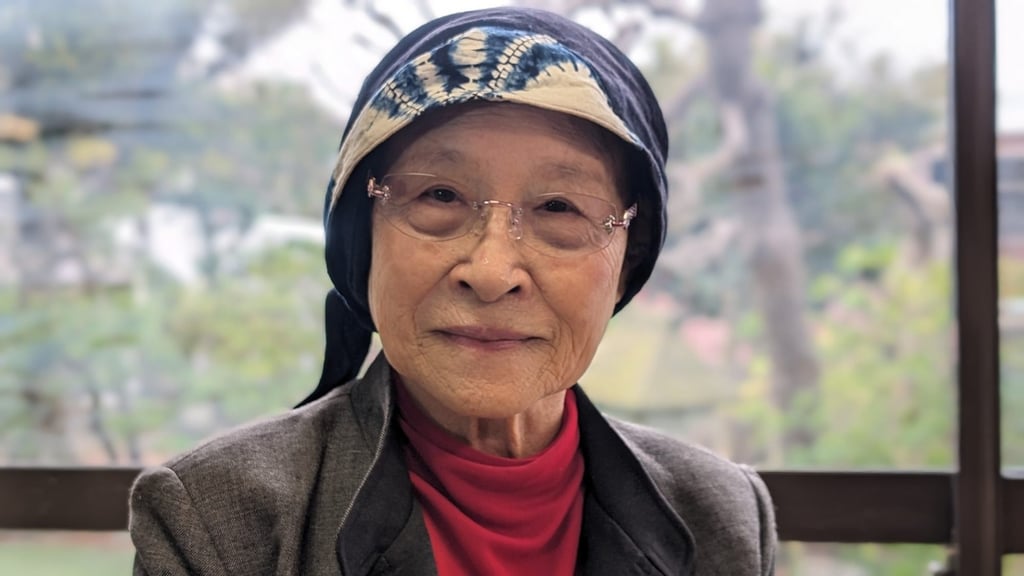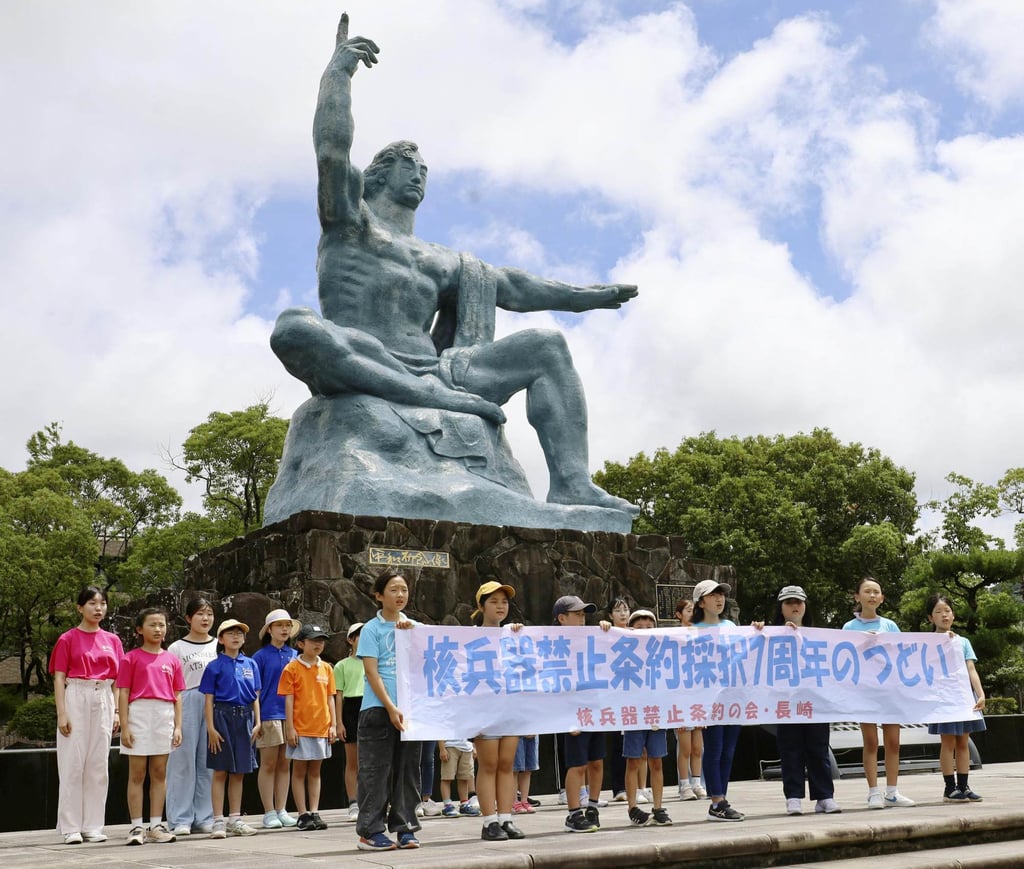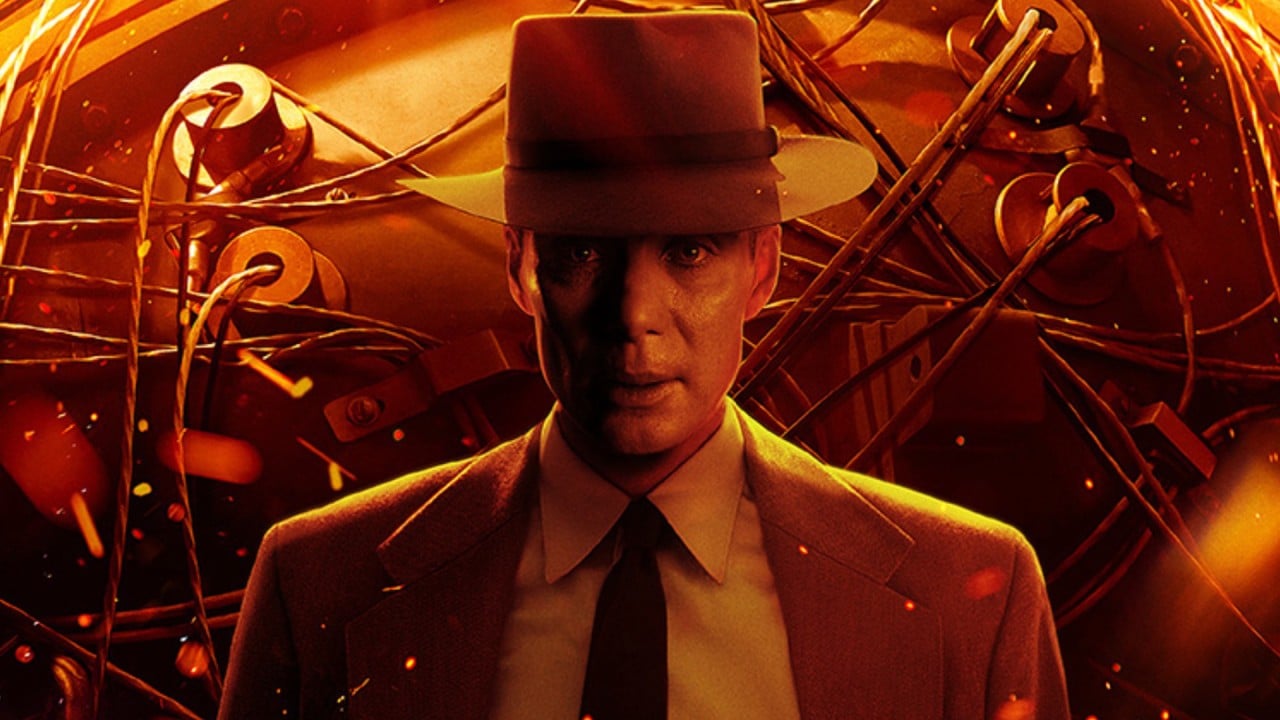“What I feel the most about these days is human stupidity,” says 93-year-old Bun Hashizume, from her home in the Japanese temple city of Kamakura.
“I was a victim of the first atomic bomb in human history and I have advocated throughout my life for the abolition of nuclear weapons, but the world leaders still do not understand their true horror.
“Even my poems cannot describe it.”
Rewind to 8.15am on August 6, 1945 in the final throes of World War II.
A US atomic bomb named “Little Boy” was dropped from a B-29 aircraft and exploded at low altitude over the city of Hiroshima. With a blast force equal to 16 kilotons of TNT, it destroyed most buildings and caused mass death and injury.
Then aged 14, Hashizume was a war-mobilised school student working in the four-storey reinforced-concrete Savings Bureau building about 1.5km from the hypocentre of the blast.
Looking back, she recalls a third-floor window being filled “with a sudden flash of light that was so bright I thought the sun had fallen at my feet. A thousand rainbows all at once seemed to explode before my eyes”. And how, after being briefly unconscious and bleeding heavily from a head wound, she staggered downstairs among other workers looking “like a parade of ghosts with wildly dishevelled hair and sooty bodies”.
Once outside the building, it was a regular employee, Tomoyanagi, who “half-carried” her to a nearby Red Cross Hospital, where more shocking scenes and high drama followed.

Hashizume is today the author of The Day the Sun Fell – Memoirs of a Survivor of the Atomic Bomb – translated by Susan Bouterey – which closely details her and her family’s horrific experiences and also explains her present-day opposition to “dangerous” nuclear power plants, which she emphasises during this Australian writer’s long-distance interview with her, via a Japanese interpreter-admirer.
Her drive was such that, at age 70, she began her solo pilgrimages to many countries over 15 years to “become a citizen of the world” and share her anti-nuclear views. With only her aged pension to buy airline tickets and stay in youth hostels, she spoke to anyone or group willing to listen, including schoolchildren. Everywhere, people were also touched by her genuine personal warmth and quiet charm. A small booklet she handed out was entitled, “Fellow Humans! Let Us Foster Love and Wisdom.”
Right now, though, she is homebound due to A-Bomb-related health issues that have plagued her life. She tells of having endured “lifelong” rheumatism, chronic kidney disease, thyroid cancer and more. The past 20 years have also brought numerous breaks of radiation-weakened ribs, collarbones and three compressed fractures of her spine after a fall in Norway in 2003.
She is unable to go outside alone. There are twice-weekly visits to a hospital and three transports per week to a rehabilitation clinic. “Otherwise I’m on my bed reading the newspapers, with care from my eldest son and his family, who live with me.”
Her activist spirit nevertheless endures. She cites recent-times threats of nuclear strikes by North Korea if threatened; by Russia amid the Ukraine war; and an Israeli cabinet minister’s suggestion to nuke Hamas in Gaza – the minister was promptly sacked by his embarrassed government which has never admitted that it has nuclear weapons – and subsequent high tensions and conflict between arch-enemies Israel and Iran.
“I believe that nuclear weapons should never be used, stockpiles should be completely abolished, and the Japanese government should join and ratify the Treaty on the Prohibition of Nuclear Weapons as soon as possible,” she says. “It’s no wonder they are being been used as a threat.” She further notes that nine nations have nuclear weapons, but the warheads of only two nations – Russia (5890) and the US (5224) – “are enough to destroy all life on Earth several times over”.
A major disappointment for her was the 28th United Nations Climate Change Conference (Cop28) in Dubai when 23 nations including the US and Japan declared they would triple the generation of their nuclear power plants to achieve zero greenhouse gas emissions by 2050.
“It is shocking that Japan joined this dangerous proposal despite the fact that the world’s pervasive emphasis on economic growth, baseless absolute trust in science and technology, and limitless pursuit of energy collapsed in Fukushima in 2011,” she says.
The disaster happened when an earthquake and tsunami caused a meltdown of three reactors at the coastal Fukushima nuclear power plant, and thousands of tonnes of contaminated water and other waste went into the Pacific Ocean. She claims discharges of contaminated water and waste have since continued and the damaged reactors and residual radiation which can affect people’s internal organs are unresolved issues.
“I also believe the Shika nuclear power plant was not unscathed following the Noto peninsula earthquake [in Japan] on New Year’s Day and there was a cover-up of the real damage,” she adds, while citing the 1986 Chernobyl plant disaster in Ukraine and the 1979 Long Island partial reactor meltdown in the US as other examples of what can go wrong.
To further appreciate her anti-nuclear passion, rewind again to Hiroshima almost 80 years ago and the scene awaiting her at the hospital, which had caught fire. Her words:
“It was thronging with people covered in burns, their faces oozing and swollen the size of pumpkins, and with skin trailing at their feet or hanging in tatters from outstretched arms; people desperately trying to push their eyeballs or intestines back in place or, lacking the strength to do even that, walking about with their intestines hanging out; people burnt to black and raw it was impossible to identify their age or sex. It was just as if I had stepped into hell.”

After Tomoyanagi left to find her own family, a 16-year-old boy Yoshiaki Iida, who was unknown to Hashizume, helped her outside just before flames engulfed the whole building.
However, she later heard that her brother, Hideo, seven, had died after his back caught fire in an instant when hit from behind by the scorching A-Bomb blast in a school playground. Her other family members survived but with bad injuries and other health problems. Younger sister Shizuko, nine, had been evacuated to a temple when she was struck by the blast wave. Years of radiation sickness caused her suicide at age 19. Older sister Mitsuko, 19, suffered “ghastly” facial wounds at her grandmother’s house.
What does Hashizume remember most after the explosion? She replies: “The complete silence and the smell of burnt corpses that filled the air.”
On August 9, 1945 – three days after Hiroshima was hit – a US air-blast plutonium bomb named “Fat Man” equal to 21 kilotons of TNT devastated much of the city of Nagasaki. On August 15, Japan surrendered and World War II was over as Nazi Germany had surrendered in May.
Estimates vary, but some 90,000 to 160,000 people died in Hiroshima and 60,000 to 80,000 in Nagasaki. About half of the deaths were immediate and the rest in the following months and years from burns, injuries and radiation-related sicknesses.
It took Hashizume almost 40 years to mentally recover enough from the experience to talk about it. Meanwhile, she married at age 30 and had three healthy sons who gave her four healthy grandchildren – but she heard that her two saviours were dead, Tomoyanagi from radiation sickness and Iida in a car accident.

Feeling uneasy to be alive when they were not, she wondered how she could also “do something”. In 1984, she turned to her gift for poetry, discovered years earlier when doctors gave her only six months to live, and she wanted to leave poems as a “keepsake” for her children. The writing “lifted a weight” from her mind and she could write more and more about the events in Hiroshima, including little Hideo’s death.
In 1985 her first collection of poems was called, The Youth Who Turned into an Insect. This was followed by over 200 other poems, many with messages of hope for young children, and some have been performed in concerts in Japan and overseas.
Today, Hashizume maintains the US should not have used the atomic bombs because Japan was already near defeat, even without an Allied land invasion. Does she want an apology from the US? “I only want to hear the voice of conscience.”
She says the impact of the atomic bombs and nuclear power plant accidents should never be forgotten, and laments that the wars in Ukraine and Gaza are changing her belief that “humans have wisdom” and her faith that “the human essence is good”.
“However, no matter how disillusioned and despairing I am, because I am one of the few remaining ‘survivors’ of that regretful ‘Little Boy’, I still have things to do and will continue so long as I have the opportunity,” she adds.
She is heartened that a TV documentary maker is recording her story; some young people are researching the atomic bomb, including one for a YouTube video; and over 20 other young people “unexpectedly” celebrated her 93rd birthday on Zoom on January 5.
“With their help, I said that I want people to understand the truth, and not only what world leaders say, and that is ordinary people in every country,” she says. “My last wish is for young people to inherit this idea.”
The Day the Sun Fell – Memoirs of a Survivor of the Atomic Bomb by Bun Hashizume (translated by Susan Bouterey) is published by Austin Macauley Publishers Ltd and also available on Kindle.



